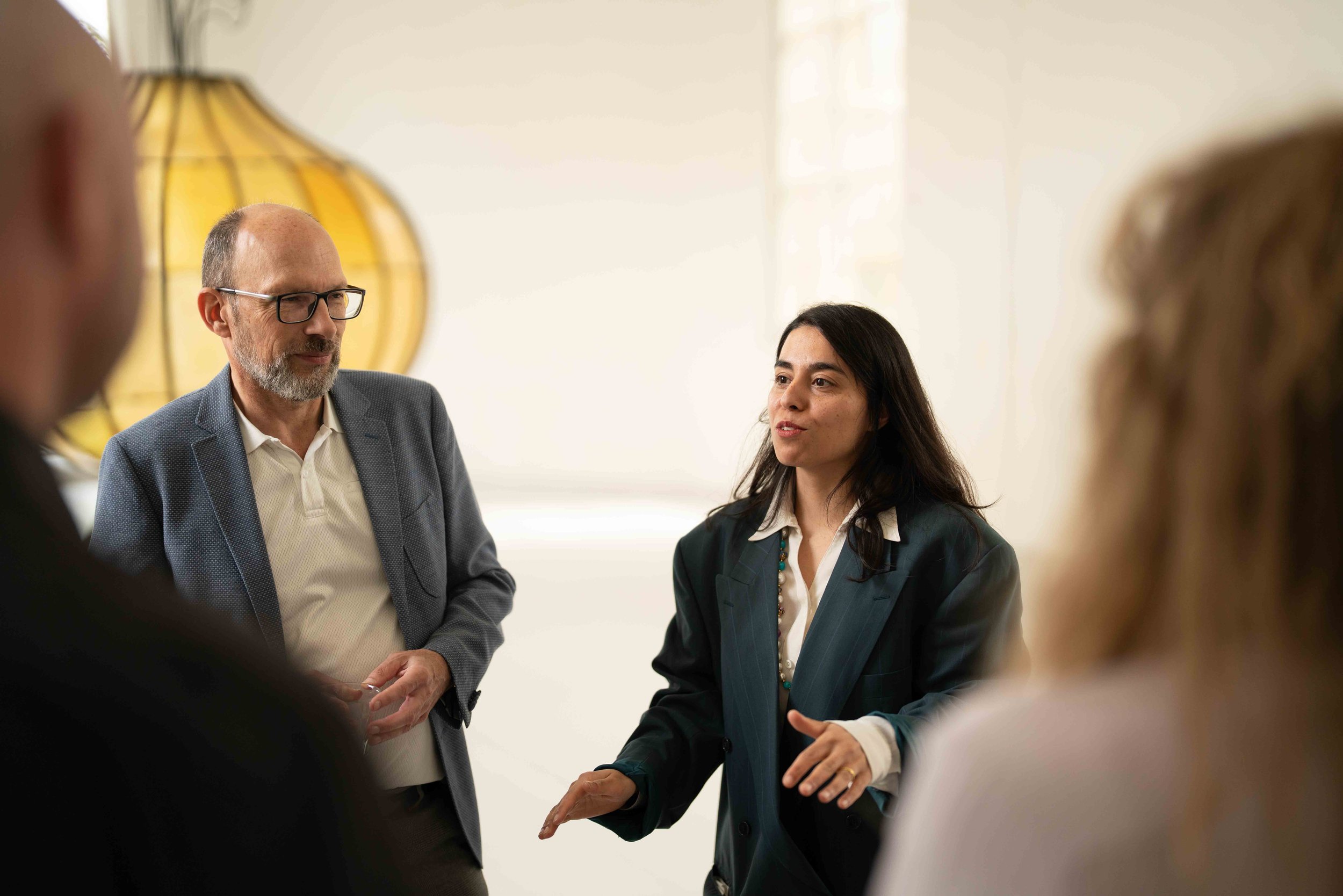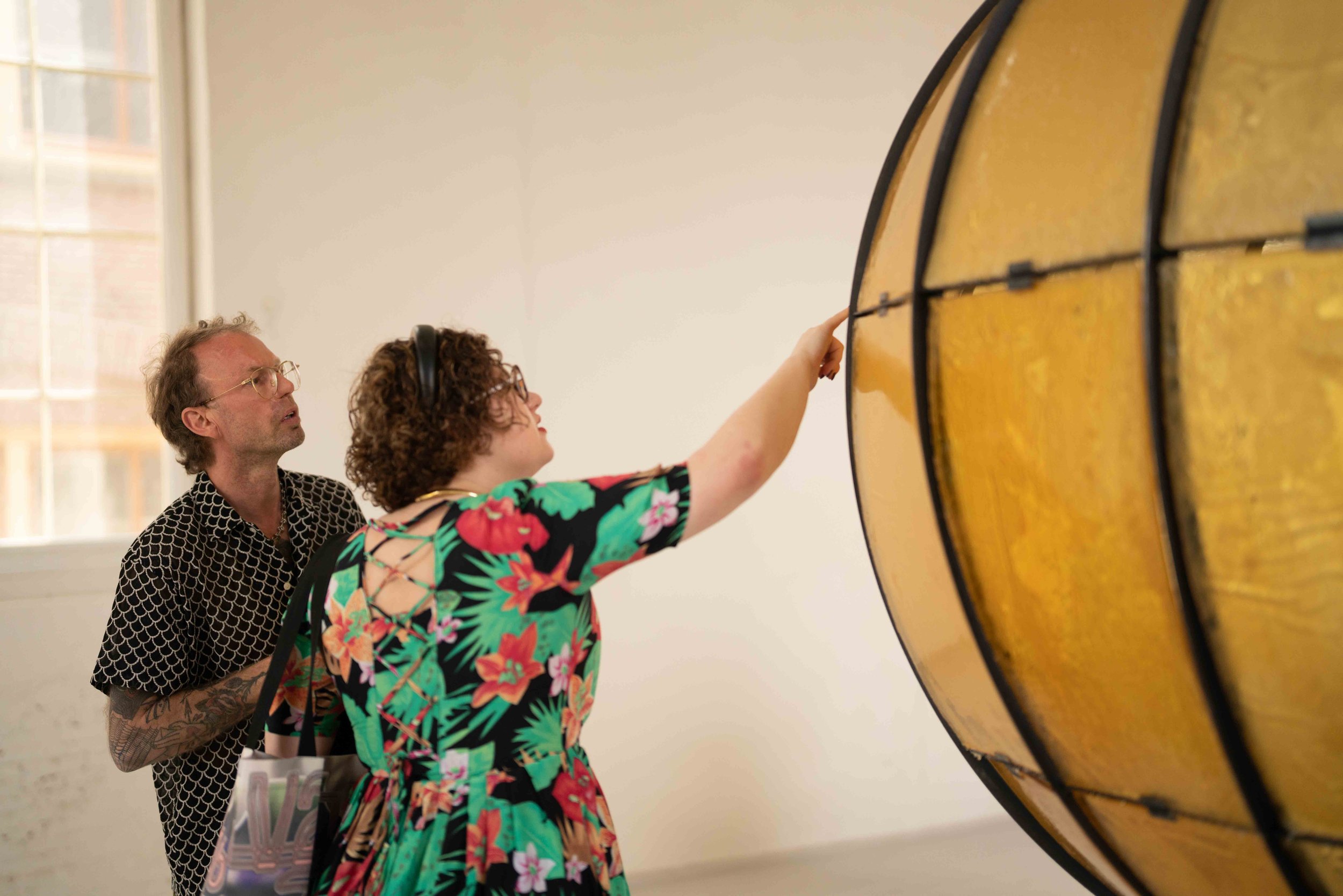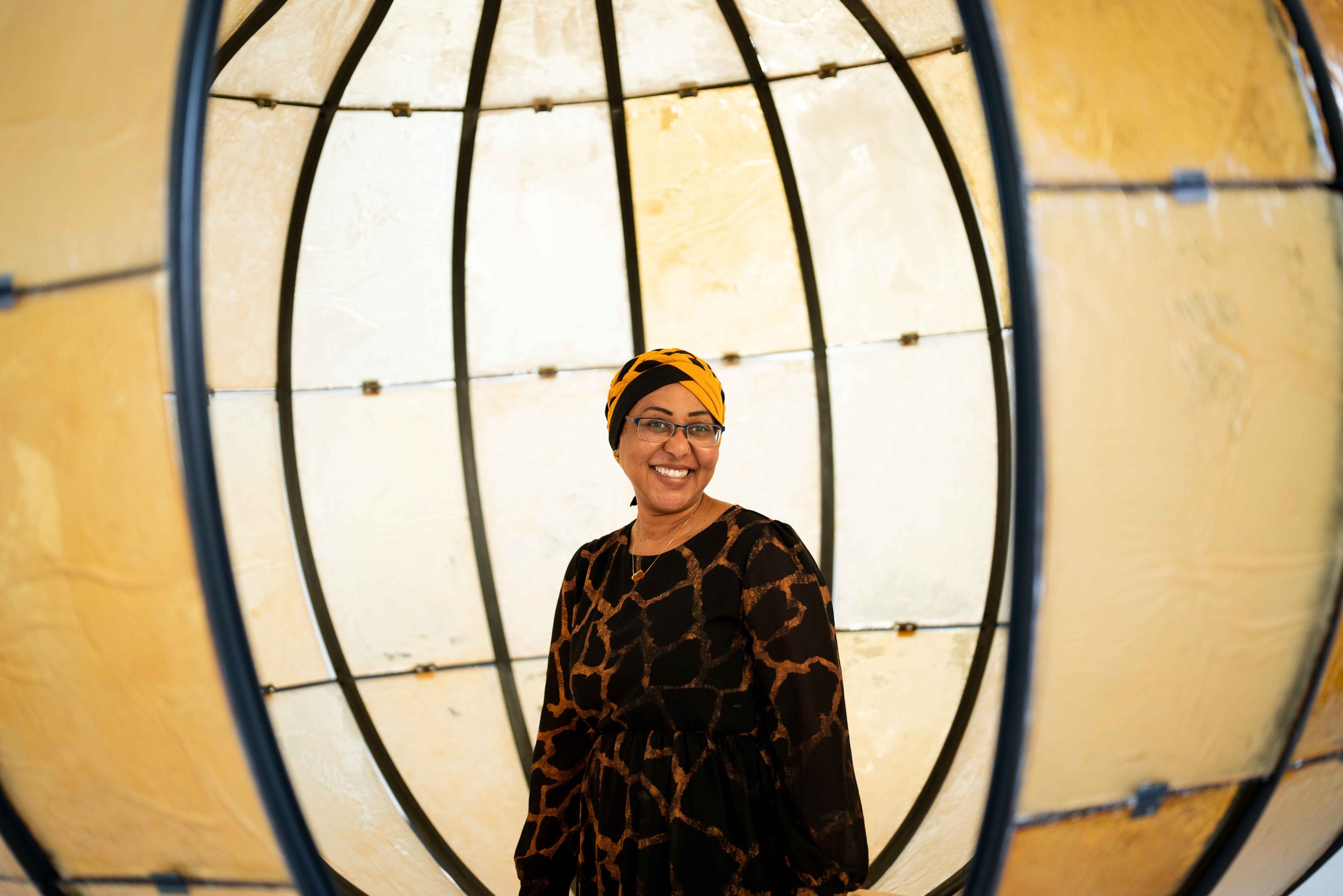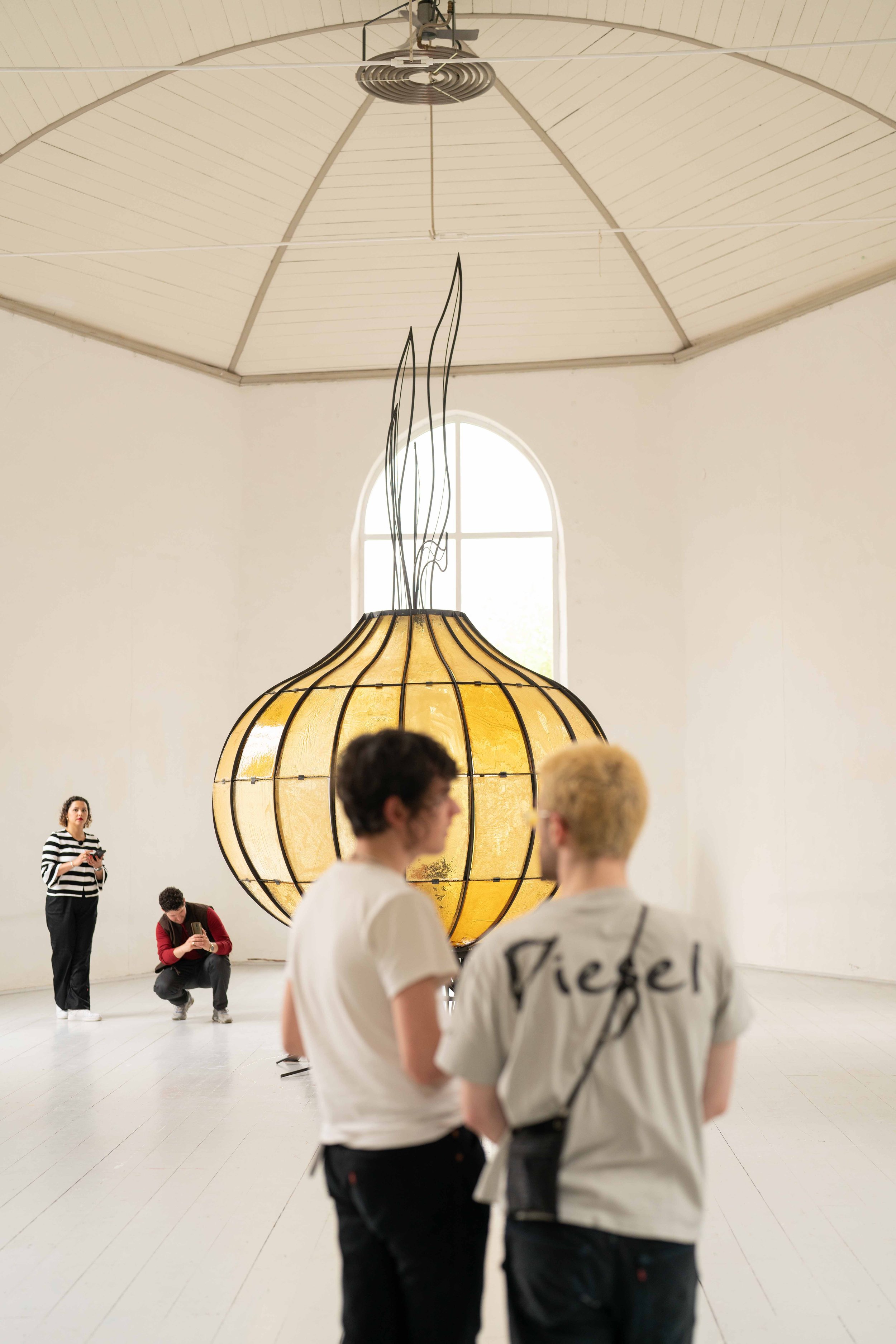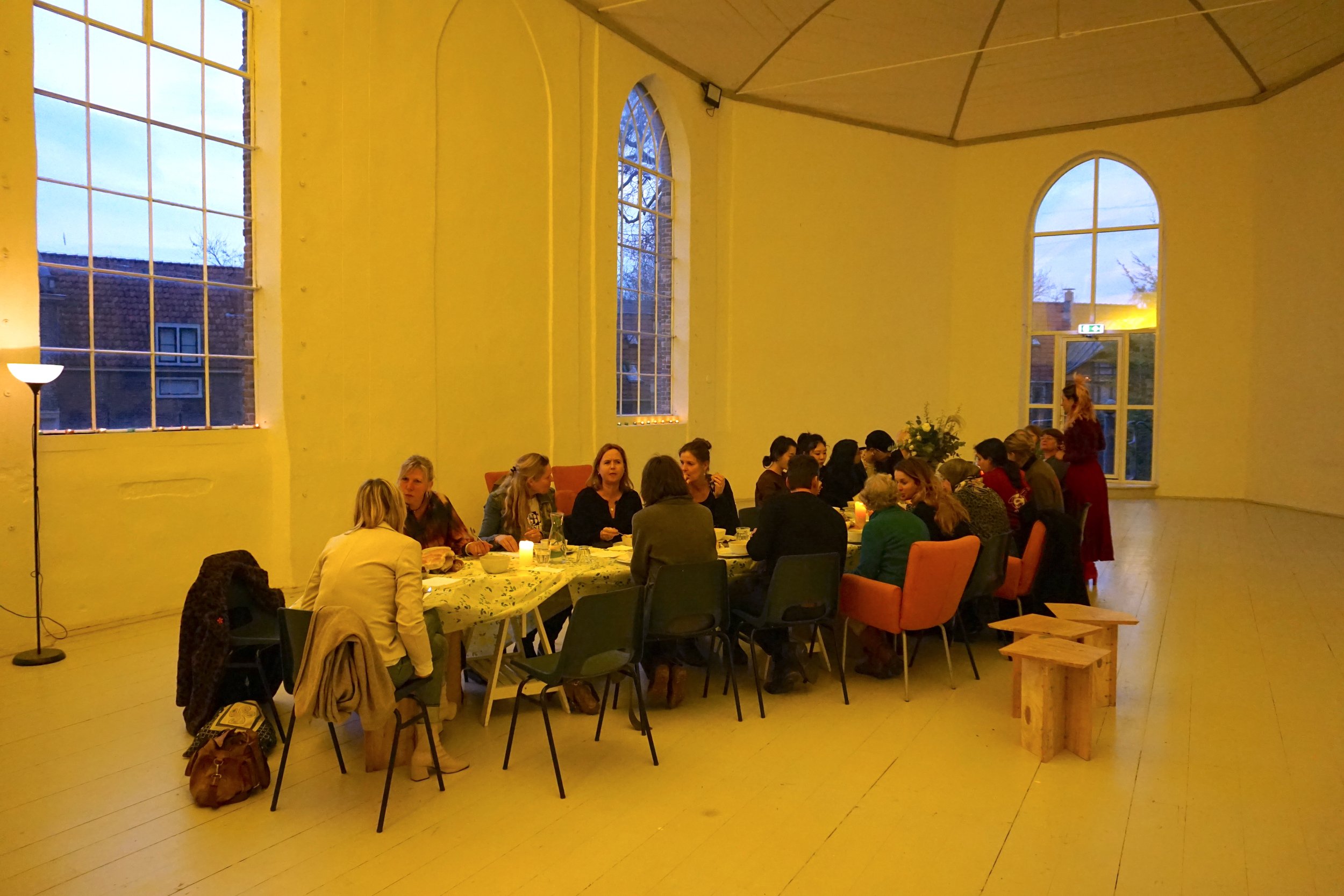Title: In the shadow of the sun
Artist: Narges Mohammadi
Photo: Lizzy Zaanen
residency: 29 March - 5 May 2023
Iftar at HMK: Friday, 21 April, 20:00-22:00
opening: Saturday, 6 May, 14:00-17:00
with a roundtable conversation from 14:00 to 17:00 (in Dutch)exhibition: 6 May - 10 June 2023
For her project In the shadow of the sun, Narges Mohammadi is trying to find her way back to her father’s grave, both literally and figuratively. Twenty years ago, he was buried in Hoorn in one of the few cemeteries with an Islamic section in the Netherlands. With a large installation executed in amber coloured sugar glass, the artist reflects on how people live on in sweetly coloured memory after death - by peeling down her personal experiences of loss and grief.
Sweetly coloured memory
When Narges visited her father’s grave at the start of her residency at HMK, she realised how we, living beings, move across the surface of the earth and the dead lie still beneath it. They have turned into immutable memories that stand still in time. “Where I start to grow grey hairs, my father never got old enough to experience the same,” she says. An onion grows exactly through that surface until it is pulled out of the earth, roots and all, and lands on a cutting board in the kitchen. As soon as the knife cuts the onion, tears start to trickle down our cheeks - like a knife cutting through our grief as soon as we start to think of our loved ones and who live on, only in our memories. But for Narges, with time and distance passing, it became increasingly difficult for her to burst into tears whenever she thought of her father. Thus, the onion became the symbol of choice of her quest, to go through each layer of her grief.

Photo: Lizzy Zaanen
Here, the six-meter-high onion-shaped installation does not taste spicy, but is rather sweet, just like the memory of when she first put on sunglasses as a ten-year-old girl and the world became a few shades warmer. Narges tries to grasp that fleeting memory by making the installation out of hardened sugar glass: sweet liquid syrup that solidifies into hard, amber-coloured panels. The way our memories continue to live on is reflected in both the form and the material the artist has worked with. Narges invites you to take a seat and reflect on what time, memory, loss and death mean to you.
A living work of art
The sugar glass breathes and moves with the humidity and temperature of its surroundings. A few days after the installation, part of the outer shell will bleach white and other parts will slowly peel off - like the outer layer of an onion that has been exposed to the outside air for too long. Slowly, the work succumbs under the weight of time and gravity - and is called back to the earth it came from. Throughout the exhibition, the installation will transform completely; a visual allusion to natural decay and the uncontrollable changeability inherent in the human condition.
Connection with Hoorn
During her residency, Narges is trying to find her way back to her father’s grave, both literally and figuratively. Narges has now not only found her way to the cemetery, but also made valuable connections with Hoorn and its people. For the production of the installation, she invited people from the Islamic community in Hoorn to help her manufacture the sugar-glass panels. Collaboration here acts as the basis on which a meeting and conversation around something as philosophical as death can take place, as well as a way to bring together people with similar experiences of loss. By connecting with a diverse network of Hoorn’s mosques, communities and the Islamic cemetery, Narges creates a new commitment for herself to Hoorn; the city that has housed her father’s body for twenty years.
Eternal grave rest
During her residency, a surprise arose over the lack of legislation and information surrounding eternal grave rights. Indeed, in the Netherlands, grave rights are renewed every ten to thirty years and therefore do not meet one of the most important Islamic conditions: eternal grave rest and the guarantee that your grave will not be cleared in the distant future. That is why she sought contact with local municipal councilors, several imams and other specialists on burial rituals and grave law. Narges wants to initiate the conversation around eternity, impermanence of memories and the passing of a body to death.
Photo: Lizzy Zaanen

Narges Mohammadi is an artist, programme maker and DJ. She graduated with a BA in Modern and Contemporary Art History from Utrecht University in 2018 and completed her BA in Fine Arts at the Royal Academy of Arts The Hague. Her artistic practice stems from a position of in-betweenness - a space embedded within separated cultural histories. She creates works that embody long-lost memories, which she then translates into large installations and sculptures. Her works, composed of simple and generally accessible materials, can be characterised by an interplay with scents, colours, symbols and customs of different cultural heritages.
Narges is of Afghan origin and fled to the Netherlands with her parents at a young age, where she grew up in an AZC in Friesland. For her project at HMK, she takes that personal history, as well as the death of her father in 2003, as the starting point for the production of a new large-scale work.
Photo: Io Sivertsen
Made possible with help of: Mondriaanfonds, Gemeente Hoorn, Stichting Niemeijer Fonds, Stichting Stokroos.













